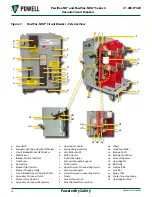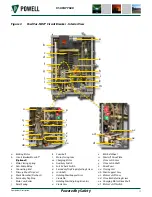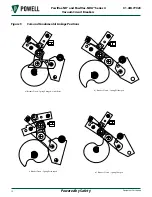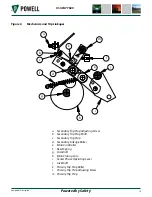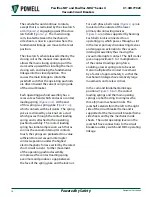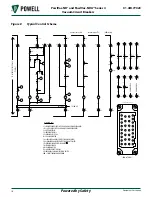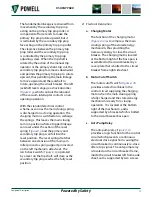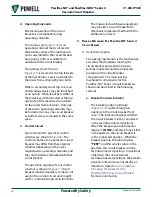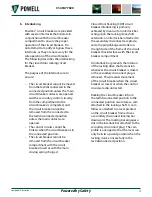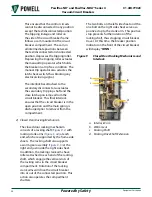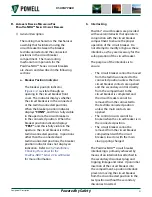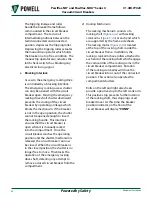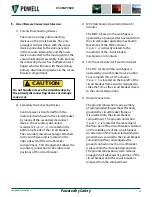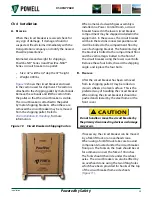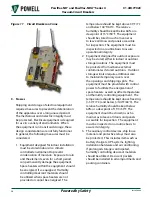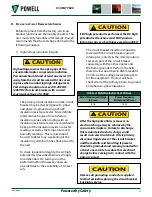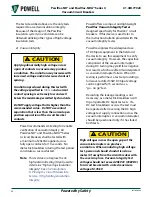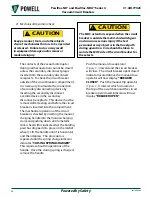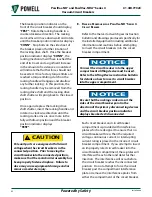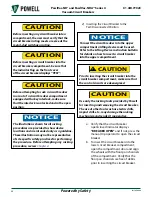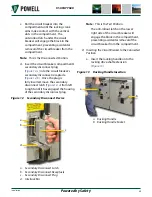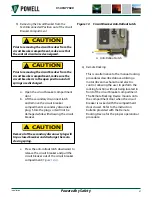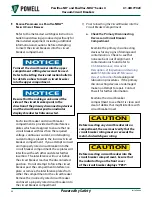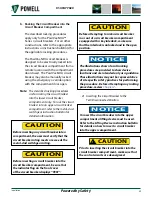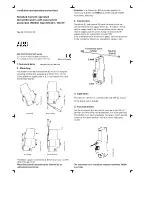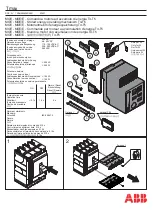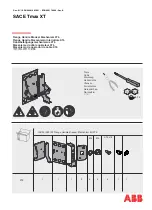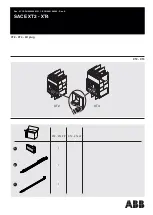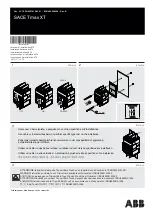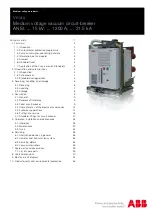
Powered by Safety
®
24
Equipment Description
01.4IB.77020
PowlVac-ND
®
and PowlVac-NDA
™
Series 4
Vacuum Circuit Breakers
6) Shutter Rollers
The circuit breaker travels between the
test/disconnected and connected positions
as the crank arm rollers
engage the vertical slots of the racking
cams attached in the circuit breaker
compartment. This action also drives the
compartment shutters to open/close which
allows the primary disconnecting devices to
connect/disconnect. Downward
movement of the crank arm rollers in the
slots will move the shutters to the fully
open position before the circuit breaker
travels towards the connected position.
7) Anti-Rollout Latch
To operate the anti-rollout latch
, push the circuit breaker
element forward in the compartment and
depress the lever before pulling the circuit
breaker element out of the compartment.
f. v
AcuuM
I
nterrupterS
PowlVac® circuit breakers utilize sealed vacuum
interrupters to control the primary circuit.
Some vacuum interrupters appear to be
identical in size and shape externally, but types
vary in ratings due to the differences
in their internal construction. For a listing
of the vacuum interrupters used in
PowlVac-ND® Series 4 and PowlVac-NDA
™
Series 4 circuit breakers see
.
VACUUM INTERRUPTERS
MUST BE REPLACED ONLY WITH NEW
VACUUM INTERRUPTERS OF THE SAME PART
NUMBER.
G. v
AcuuM
I
nterrupter
c
onnectIonS
Connection to the vacuum interrupter stems is
made by means of copper contact blocks. The
top stem of the vacuum interrupter is threaded
and a copper contact block is screwed onto this
stem. The contact block is assembled to the
upper primary disconnecting devices of the
circuit breaker. Another copper contact block
with primary disconnecting devices surrounds
the bottom or moving stem of the vacuum
interrupter. The sliding contact assembly inside
the lower contact block makes contact with
this block and the moving stem of the vacuum
interrupter. The multiple parallel paths of the
sliding contact assembly keeps the current
density low.

